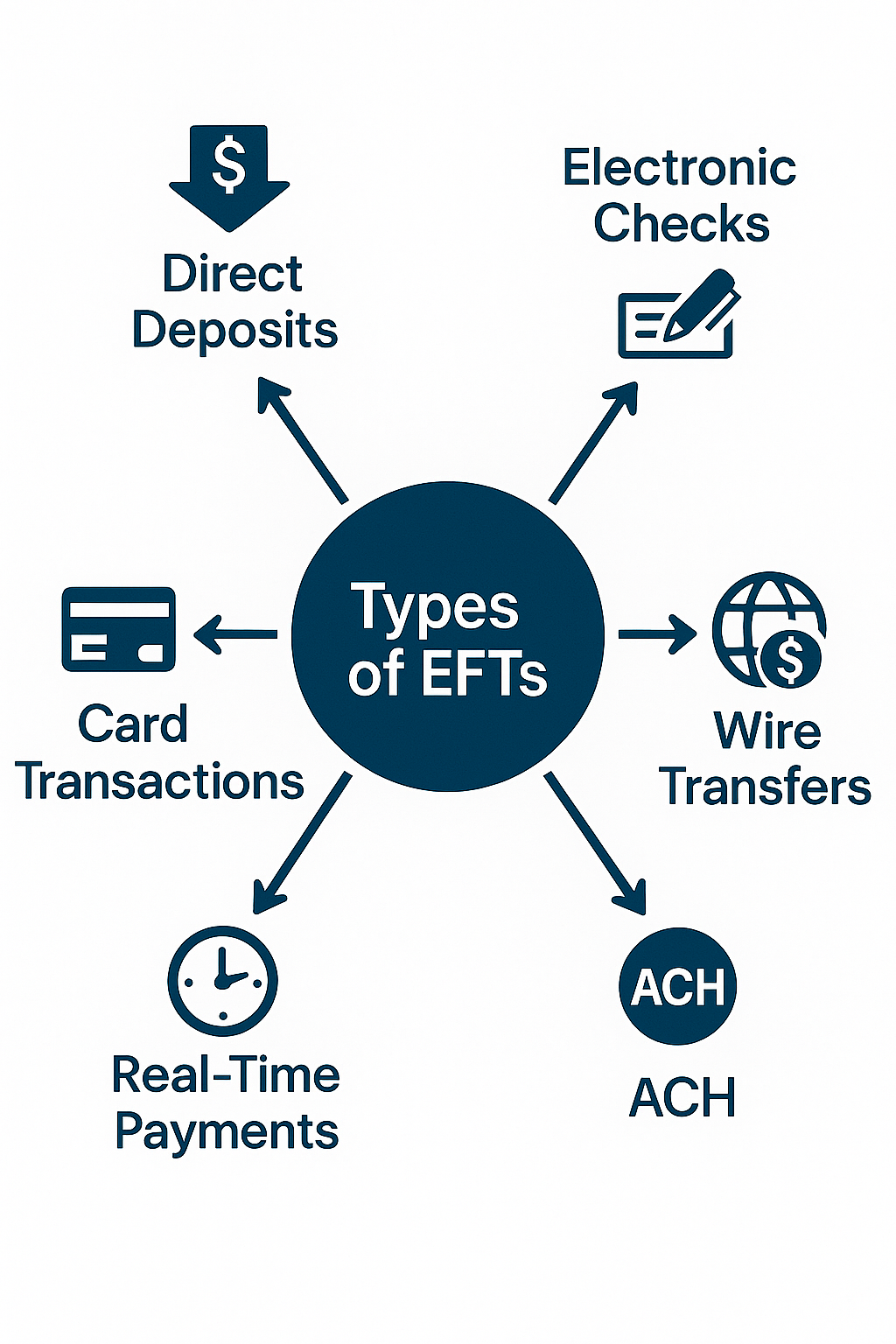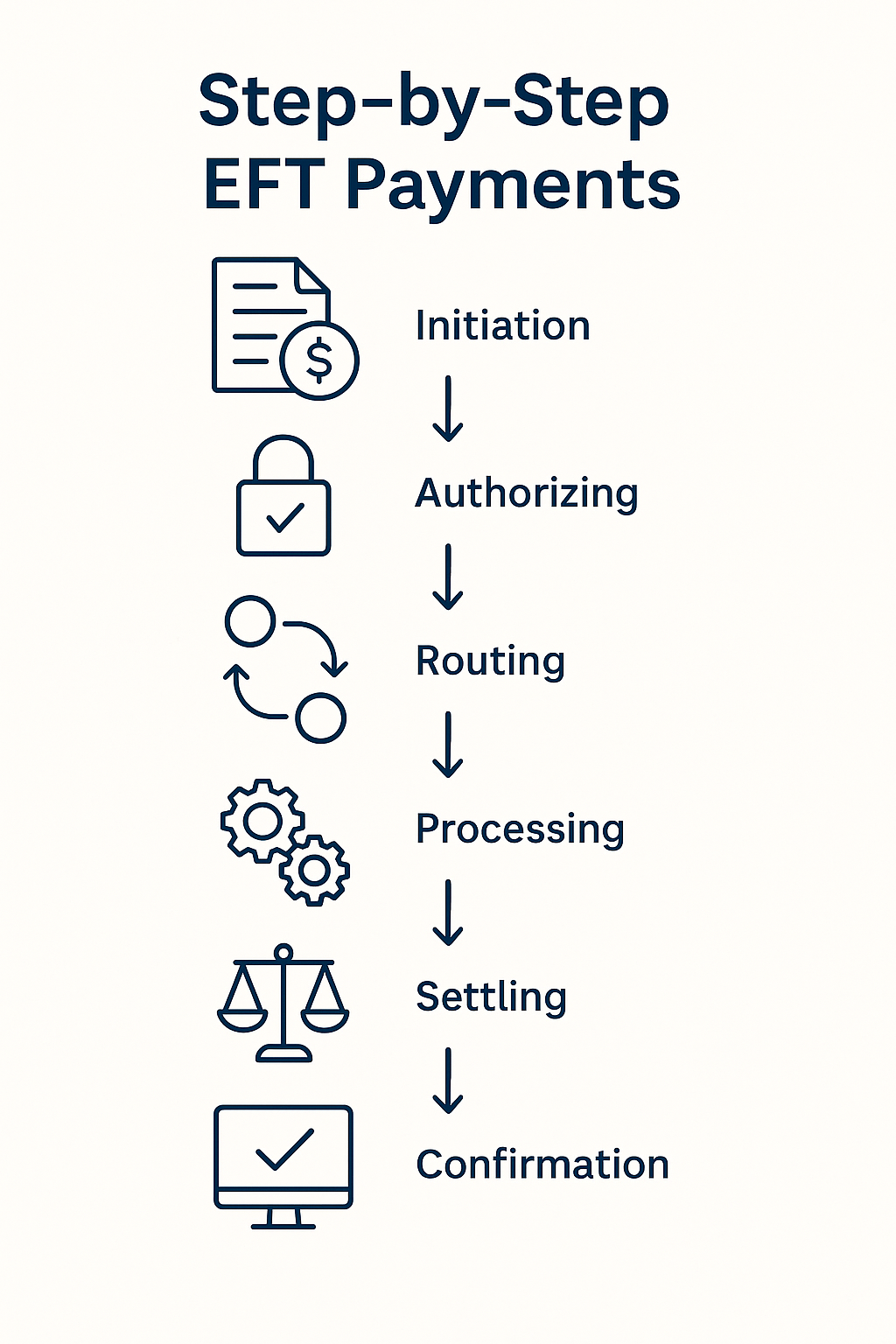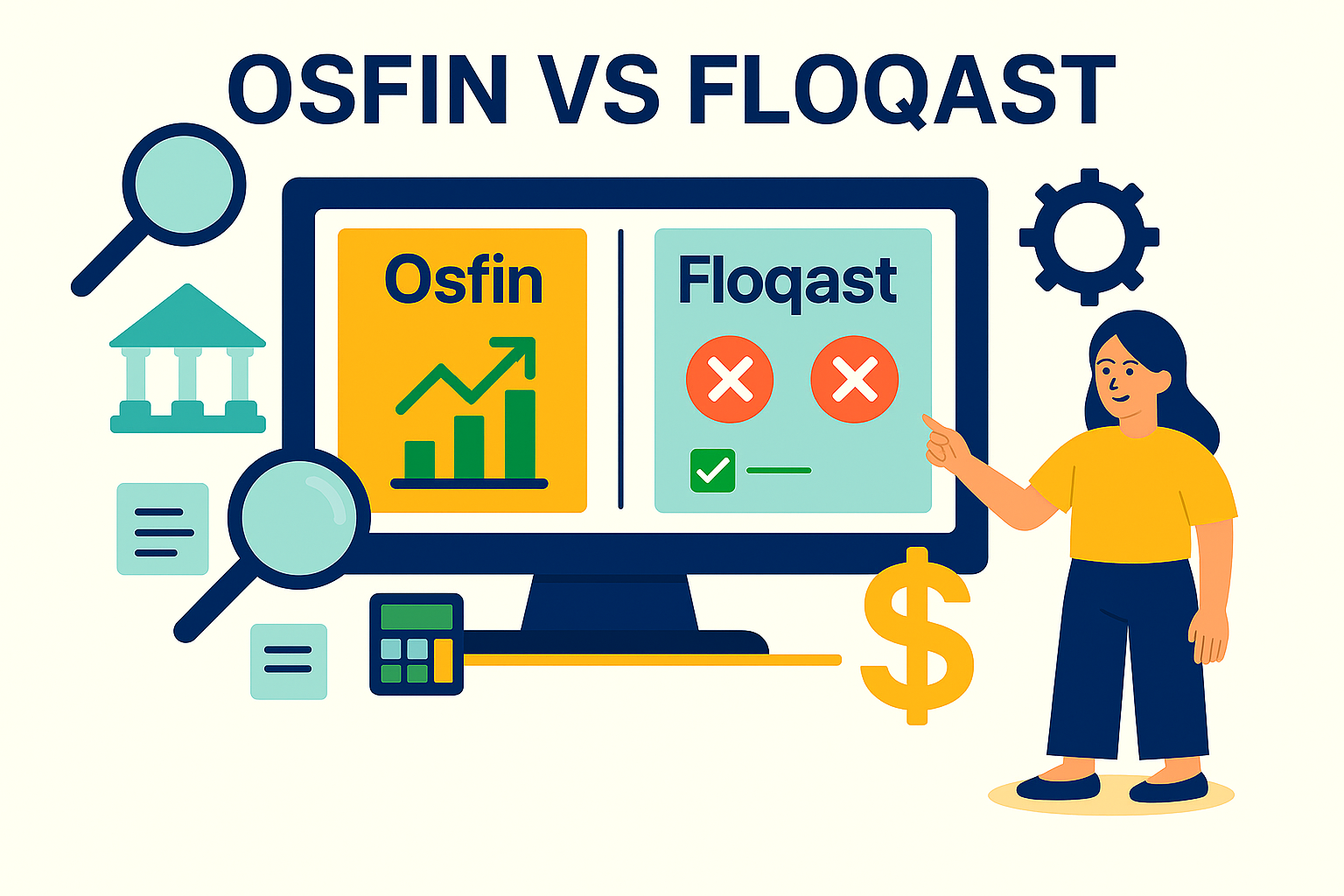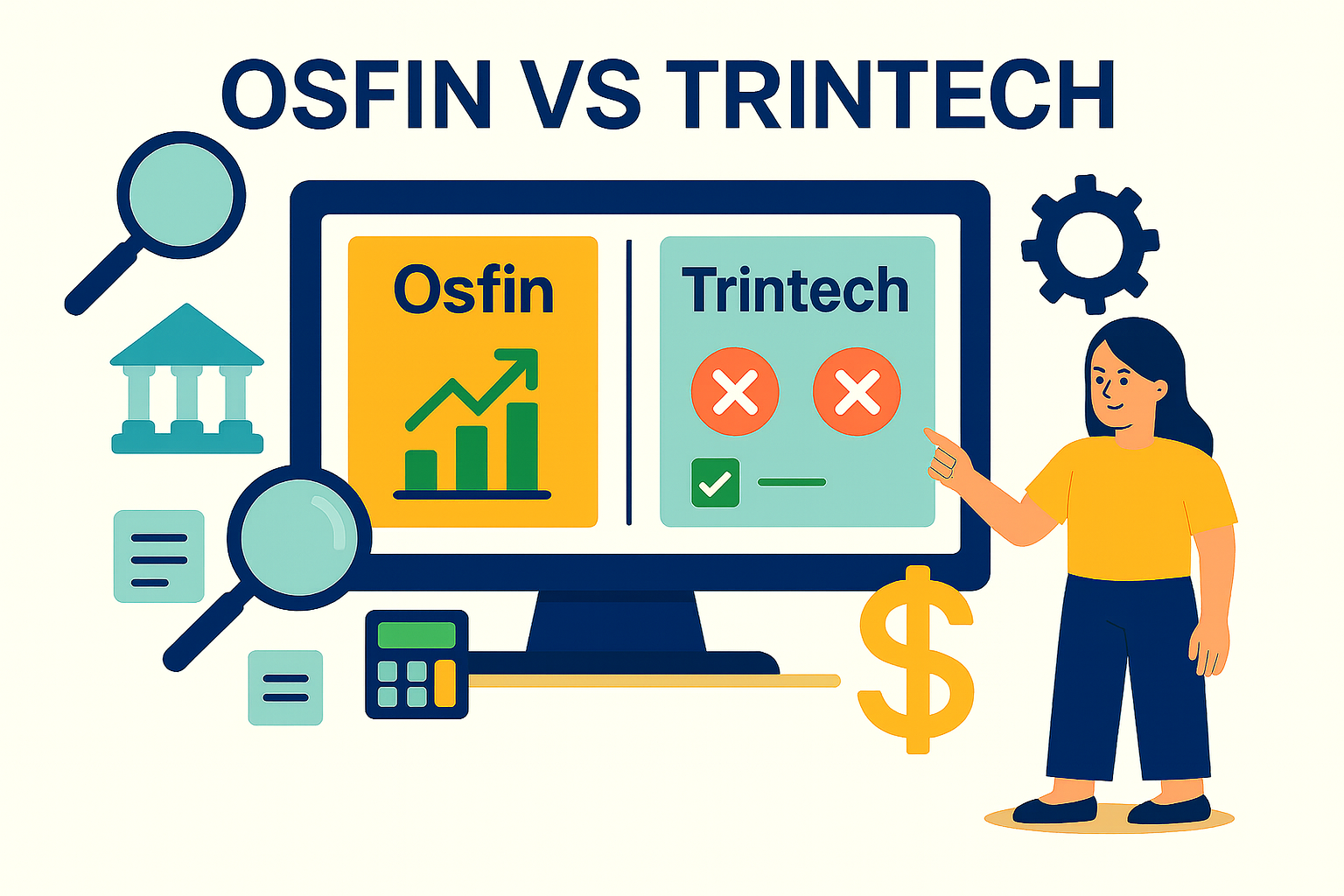What Is EFT in Banking? How It Fits into the Reconciliation Workflow
Electronic Fund Transfers (EFTs) have become one of the most common ways to move money, whether between individuals, businesses, or institutions. Banks, credit unions, and fintechs handle these transactions in massive volumes every day across multiple rails like ACH, NEFT, SEPA, and RTP.
While EFTs offer speed and convenience, they also create operational complexity. Each transaction passes through various systems like the core banking system, payment processors, settlement networks, and customer interfaces. Without the right checks in place, even minor delays or mismatches in transaction data can lead to unreconciled items and ultimately compromise downstream processes like balance validation, exception management, and financial reporting.
In this article, we will break down the question: what is EFT? We also look at how EFTs work in the banking ecosystem, their benefits, and how EFTs fit into the reconciliation workflow.
What this blog covers:
- What an EFT (electronic funds transfer) is and how it works in banking
- The main types of EFT: ACH, wire transfers, bank-to-bank transfers, online payments
- Differences between EFT and other payment rails (ACH vs wire vs EFT)
- Core benefits of EFT for banks and businesses: speed, cost, efficiency
- Key challenges and risks in EFT processing and settlement
- How banks and financial institutions ensure accuracy and control in EFT workflows
- How the platform (Osfin) supports and optimises EFT reconciliation and automation
- Frequently Asked Questions on EFT in Banking
What is Electronic Funds Transfer (EFT)?
Electronic Funds Transfer (EFT) is the digital way banks move money between accounts, replacing the need for paper checks or cash. It’s used for everyday transactions like direct deposits, bill payments, wire transfers, and ATM withdrawals. They are generally faster, safer, and more efficient because they rely on secure computer systems that connect banks, check details, and process payments automatically.
As businesses shift toward paperless payment methods to enhance efficiency, EFT transfers have emerged as a critical enabler. From ACH payments and wire transfers to credit card transactions and real-time payments (RTPs), EFTs support a wide range of digital transactions. They play a central role in modernizing financial operations and streamlining routine payment workflows.
How is EFT Used in Banking?
EFT payments are used in banking for a variety of processes and operations. These include:
- Enabling individuals and businesses to move money between accounts.
- Supporting payroll, vendor payouts, dividends, refunds, and other high-volume outbound payments for businesses.
- Facilitating fund movement between different financial institutions via domestic (ACH, NEFT, RTGS) or cross-border (SWIFT) networks.
- Handling scheduled payments such as subscriptions or utility bills through automated EFT setups.
How Do EFTs Work for International Payments?
International EFTs typically occur through wire transfers over networks like SWIFT. These payments involve multiple intermediaries and must comply with country-specific regulations, KYC norms, and transfer limits. Banks apply currency conversion rates and may charge additional processing or intermediary fees. Settlement can take 1–5 business days, depending on the destination, currency, and network used. Accurate routing codes (like IBAN, SWIFT/BIC) are essential for successful cross-border EFT processing.
Why EFT Matters in the Reconciliation Workflow
EFT tracking plays a central role in reconciling high-volume transactions across banking systems. Every EFT generates a transaction ID and supporting metadata, including amount, timestamp, sender, and recipient. These can be matched against ledger entries and settlement files. Accurate tracking reduces breaks, speeds up exception handling, and supports operational integrity.
Here's how EFTs support reconciliation:
1. Verify Transaction Accuracy
Each EFT is logged by both sender and receiver systems. Every EFT is logged across systems like the core banking platform, payment gateway, and settlement file (e.g., ACH batch files, SWIFT MT103 messages). Reconciliation tools match these records against internal ledgers to catch discrepancies in real-time.
2. Flag Unmatched or Duplicate Entries
Systems can automatically detect pending, delayed, or unauthorized transactions. Early identification reduces the risk of compounding errors or missed settlements.
An advanced tool like Osfin.ai identifies these breaks across files, flags duplicates, auto-classifies exceptions, and routes them to the right teams for resolution. These issues are visible in real-time on Osfin's AI-powered reconciliation dashboard.
3. Support Regulatory Compliance
Detailed EFT records are crucial for audit trails, compliance reporting, and cross-border validations. Institutions must reconcile these records to meet KYC, AML, and regulatory standards.
{{banner1}}
How Long Do EFT Transfers Take?
EFTs don’t move at the same speed. Some are clear in minutes. Others take days.
It all comes down to the payment rail, the banks involved, and the checks that happen along the way.
Here’s how long EFTs usually take and why the timing is not always predictable.
Domestic EFTs: 1 to 3 Days
Domestic EFTs usually travel through batch networks like ACH or BACS. These networks process payments on fixed schedules. The bank collects the payment, holds it until the next batch window, sends it through the network, and then waits for the receiving bank to verify and settle it.
This creates a natural delay that makes 1 - 3 business days the most common timeline.
International EFTs: 1 to 5 Days
International EFTs take longer because the payment must pass through multiple banks, time zones, and regulatory environments. Many transfers move across the SWIFT network and depend on correspondent banks to route the payment. Each bank in the chain performs its own checks, applies currency conversion rules, and completes compliance screening.
These extra layers add time and create a normal range of 1 - 5 business days.
What Affects EFT Speed
EFT timing mostly depends on how clean the payment is and how many banks touch it. Transfers move faster when the details are correct, the payment is sent before the daily cut-off time, and both banks support faster or real-time rails. Payments also speed up when the sender and receiver use the same bank or when the currency does not require special conversion.
EFTs slow down when the bank holds the payment for review, when any account or routing information is incomplete, or when the transfer passes through several intermediary banks. Timing also drops when the payment is sent near weekends or holidays, when time zones interrupt processing, or when the currency or receiving country requires extra screening.
What are the Different Types of EFT Payments?

There are several methods for conducting EFT payments, and the process is generally straightforward. The most common types of these include:
- Direct Deposits: Direct deposits are widely used since they avoid the paperwork associated with manual deposits. This form of EFT automatically deposits funds into the recipient's account. The only requirement for this type of EFT is the initial information required during setup and a bank account.
- Electronic Checks: Electronic Checks, more often known as e-checks, are used to generate digital checks. Many companies use this form of EFT to make vendor payments.
- Wire Transfers: Typically used for large-value or time-sensitive payments. These transfers, processed through domestic (like RTGS in India, Fedwire in the US, CHAPS in the UK) or international (SWIFT) networks, move funds directly from one institution to another.
- ACH Payments: Batch-processed transactions for use cases like vendor payouts, insurance settlements, and bill payments. This is most commonly used in the US.
- Real-Time Payments (RTP, UPI, Faster Payments): 24/7 instant payments used for both consumer and B2B payments. These systems offer real-time fund settlement and are growing in adoption globally.
- Debit/Credit Card Transactions: Though technically card-based, these transactions also rely on electronic fund transfers through payment networks to move money between accounts.
How Are Electronic Funds Transfers Processed?

EFT payments are typically processed by banks using domestic clearing networks. In the US, this is usually the ACH (Automated Clearing House) system. In Europe, systems like SEPA (used across the EU), BACS (UK), STEP2 (pan-European), and TIP (Target Instant Payment Settlement in the Eurozone) handle similar roles. These networks connect financial institutions, including banks and credit unions, and process transactions in scheduled batches. Payments are collected throughout the day and processed in groups at designated intervals.
Senders must provide the recipient's bank information, including the bank's name, account type, account number, and routing number. The following steps have to be taken to complete an EFT payment:
- Payment Initiation: An individual or business initiates the transaction through online banking portals, mobile apps, or integrated enterprise systems.
- Multifactor Authentication: To secure the transaction, multifactor authentication must be completed. This is done via PINs, passwords, or biometrics.
- Routing: Payment instructions are routed between participating financial institutions via secure networks like ACH, SEPA, or SWIFT, depending on the transaction type and region.
- Processing and Settlement: The receiving and sending banks validate account details and confirm fund availability. The payment is then settled based on the rules and timing of the selected network.
- Confirmation: The system will then create a unique transaction ID. These are crucial for confirming payment and maintaining accurate records.
What's the Difference Between EFT, ACH and Wire Transfer?
How Automation Simplifies EFT Reconciliation
Reconciling EFT payments at scale means handling large volumes of data across systems, formats, and clearing networks. For banks, fintechs, and financial institutions, automation can eliminate the manual burden of verifying thousands of transactions, reduce delays, and improve accuracy across the board.
Here's how automation makes EFT reconciliation more efficient:
1. Multi-Format Data Integration
EFTs data come in through varied file types, ACH files, SWIFT MT messages, SEPA XMLs, or custom CSVs from third-party APIs which then need to be matched with internal records. Manual parsing of these formats slows down reconciliation. Osfin.ai automates data ingestion, normalizes formats, and maps fields across systems, allowing faster, cleaner comparisons between payment files, ledger entries, and settlement reports.
2. High-Volume Matching Across Core Systems
Automation allows financial institutions to reconcile millions of EFT records across core banking platforms, ERP systems, payment processors, and ledger tools. Osfin.ai uses intelligent matching rules to process and verify transaction data with high accuracy, helping operations teams spot mismatches without sifting through spreadsheets.
3. Automated Break Detection at Scale
High-volume EFT workflows often suffer from duplicate entries, timing mismatches, or routing errors. Osfin.ai flags these issues automatically, whether it's a missing confirmation, an unmatched transaction ID, or a currency discrepancy. It also routes each exception to the right team or rule path for resolution, reducing investigation time.
4. Unified Dashboard with Real-Time Monitoring
All EFT activity, matched, pending, or failed, can be tracked in one place with Osfin.ai's real-time dashboard. Teams get instant visibility into reconciliation status across payment channels and can act on alerts for any discrepancies, delays, or risk flags.
5. Audit-Ready Reports and Exception Logging
Automation software like Osfin.ai generates detailed audit logs and reconciliation summaries. These reports help you stay compliant, track historical issues, and resolve disputes faster by providing clear visibility into transaction-level activity and exception trends.
Why Osfin.ai Is Built for EFT Reconciliation at Scale
EFT reconciliation helps build confidence in your financial operations. Osfin.ai is designed to help banks, credit unions, and fintechs achieve 100% reconciliation accuracy, even across fragmented systems and millions of daily transactions.
The platform automates every layer of the process, from ingesting multi-format files to detecting mismatches and routing exceptions, so your teams can focus on resolution, not manual checks. Osfin integrates directly with your core banking systems, payment rails, and ERPs, making it easy to maintain a single source of truth.
With real-time dashboards, built-in compliance controls, and bank-grade security, Osfin.ai helps you maintain data integrity while meeting audit and regulatory requirements.
{{banner2}}
FAQs on EFT in Banking
1. What is Electronic Funds Transfer (EFT)
Electronic Fund Transfers (EFT) are just what the name suggests: a digital way to move money from one account to another. This could be between accounts at the same bank or across different banks. The process is virtual, fast, and hassle-free.
2. What are the common reasons for unreconciled EFT transactions?
Unreconciled EFT transactions often result from delays in settlement confirmations, data mismatches across systems, missing reference IDs, duplicate entries, or differences in file formats between payment processors, core banking platforms, and internal ledgers.
3. What compliance requirements are tied to EFT reconciliation?
EFT reconciliation supports compliance with regulations like KYC, AML, and audit reporting. Financial institutions must maintain accurate transaction logs, identify exceptions promptly, and ensure data integrity to meet regulatory standards.
4. How do financial institutions reconcile high-volume EFT transactions?
Financial institutions use automated reconciliation tools to ingest data from multiple systems, match records based on transaction metadata, and flag discrepancies. These systems streamline exception handling and reduce manual workload, even across millions of daily EFT transactions.
5. What is an EFT example?
An example of an EFT is a direct deposit, where a company transfers salaries electronically to employee accounts. Other examples include ACH transfers, wire transfers, online bill payments, and real-time payments like UPI or Faster Payments.
6. Can EFTs be reversed?
Sometimes. It depends on the rail and how quickly you catch the mistake. Batch payments can often be corrected if reported fast. Real time transfers and wires are usually final. When in doubt, call the bank right away.
7. Are EFTs available internationally?
Yes. Many banks support international EFTs, but the process can take longer. Cross border transfers usually involve extra checks, currency conversion, and more steps than a domestic payment.
8. What is the max EFT limit?
There is no single limit. Every bank sets its own caps for daily or per transfer amounts. Some accounts allow small transfers. Others support very large ones. Always check your bank’s rules for exact limits.


